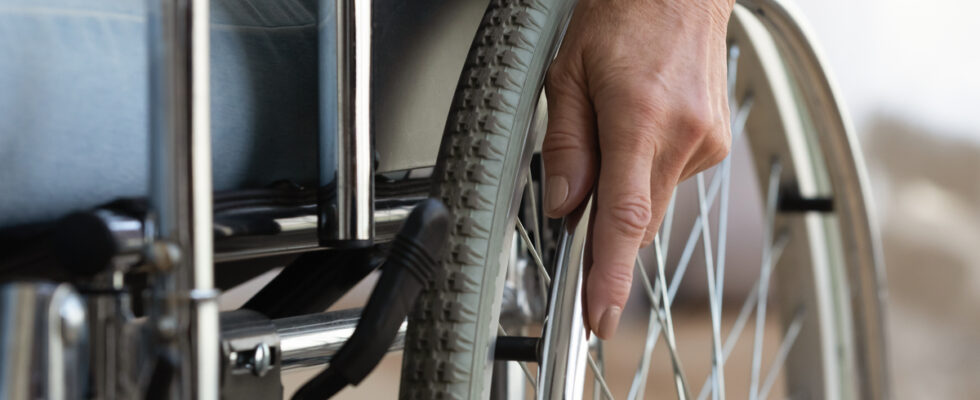For the first time, a paraplegic person was able to regain natural control of walking through thought, thanks to the coupling of two technologies which restored communication between the brain and the spinal cord.
“I regained freedom”, summarizes this patient, Gert-Jan, who does not wish to give his surname. Suffering from a spinal cord injury in the cervical vertebrae following a bicycle accident ten years ago, this 40-year-old Dutchman can now stand up, move on varied terrain and even climb stairs. “At the start, he was unable to put one foot in front of the other”reported Swiss surgeon Jocelyne Bloch, professor at the Vaudois University Hospital, presenting a study published Wednesday in the journal Nature.
Before him, other patients who could no longer move their legs benefited from advances allowing them to walk again. But for the first time, this man can again control by thought the movement of his legs and the rhythm of his steps, underlines the study. A feat made possible through the combination of two technologies implanted in the brain and the spinal cord, explains to AFP Guillaume Charvet, researcher at the CEA (Commissariat for Atomic Energy and Alternative Energies), part of the project. This result is the fruit of more than ten years of research by teams in France and Switzerland.
The spinal cord, contained by the vertebral column, extends the brain and controls many movements. These can therefore be irretrievably lost if the contact with the brain is damaged.
digital bridge
To change the situation, electrodes developed by the CEA were implanted in the paralyzed patient, above the region of the brain responsible for leg movements. This device makes it possible to decode the electrical signals generated by the brain when we think of walking. At the same time, a neurostimulator connected to a field of electrodes was positioned over the region of the spinal cord that controls leg movement.
Thanks to algorithms based on artificial intelligence methods, movement intentions are decoded in real time from brain recordings. These intentions are then converted into electrical spinal cord stimulation sequences, which in turn activate the leg muscles to achieve the desired movement. The data is transmitted via a portable system placed on a walker or in a small backpack, allowing the patient to do without outside help.
Until now, the installation of a single implant that electronically stimulates the spinal cord has allowed paraplegic patients to walk again. But the control of this walk was not natural. This time, the digital bridge created between the brain and the spinal cord allows Gert-Jan not only to move, but also to voluntarily control his movements and their amplitude.
“Long Journey”
“It’s radically different from what we’ve seen so far”enthuses the French neuroscientist Grégoire Courtine, professor of neuroscience at the École polytechnique fédérale de Lausanne. “Previous patients walked with a lot of effort; now he just needs to think about walking to take a step”.
Operated twice for the installation of the two implants, the Dutchman evokes “a long journey” to be able to stand again and walk for several minutes at a time. Another important advance: after six months of training, he seems to have recovered part of his sensory and motor faculties, even when the system is deactivated.
“These results suggest that the establishment of a link between the brain and the spinal cord would promote a reorganization of the neuronal circuits at the level of the lesion”, deciphers Guillaume Charvet, of the CEA. A technology soon accessible to the greatest number? “It will take many more years of research” before its generalization, tempers Mr. Charvet.
But the teams are already preparing to launch a trial to restore, with the same technology, the function of the arms and hands. They also hope to apply it to other clinical indications, such as paralysis caused by stroke.
